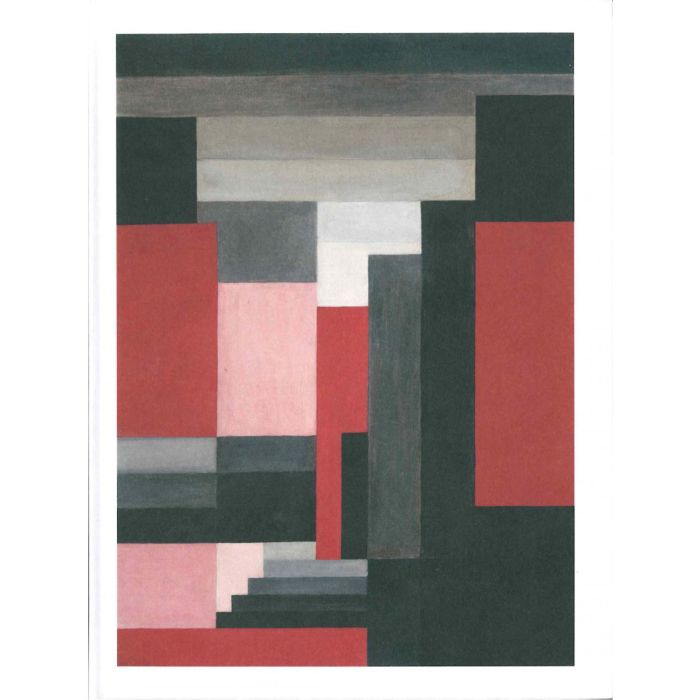My Cart
Your cart is empty
Looks like you haven't made your choice yet.
- Subtotal
Flouquet, Kassák, Léonard

De architectuur van het beeld tijdens het Interbellum
- MuZEE Oostende
- Expo: 17/6/2018 - 4/11/2018, MuZee, Oostende
- Texts: P.L. Flouquet, J. Léonard, L. Kassák a.o.
More Information
| Publisher | MuZEE Oostende |
|---|---|
| ISBN | 9789074694285 |
| Author(s) | Texts: P.L. Flouquet, J. Léonard, L. Kassák a.o. |
| Publication date | July 2018 |
| Edition | Hardback |
| Dimensions | 250 x 200 mm |
| Illustrations | throughout col. & bw ill. |
| Pages | 352 |
| Language(s) | Eng./ NL ed. |
| Exhibition | MuZee, Oostende |
Description
The Architecture of Images during the Interwar Period - Modernisme
Pierre-Louis Flouquet, Lajos Kassákand Jos Léonard were three visual artists and graphic designers who shaped the interwar years by harnessing the endless possibilities of the line and the plane, and the circle, triangle and square.They shared the conviction that geometric abstraction could bea blueprint for a renewed society after the First World War.It was a message that was advanced through the international avantgarde network of magazines that included, amongst others, Kassák's MA, the Brussels-based 7 Arts with Flouquet as artistic director and Het Overzicht run by Jozef Peeters and Michel Seuphor in Antwerp, with Léonard as an occasional contributor. For Constructivist artists there was no clear distinction between West and East, or centre and periphery. 'Connection' was the keyword, for example between the Belgian and Hungarian avantgarde movements in Antwerp, Brussels, Budapest and Vienna.
Pierre-Louis Flouquet, Lajos Kassák en Jos Léonard zijn drie beeldende kunstenaars en grafische ontwerpers die na de Eerste Wereldoorlog een nieuwe wereld wilden creëren vanuit de eindeloze mogelijkheden van de lijn, het vlak, de cirkel, de driehoek en het vierkant. Deze tentoonstelling verbindt abstract, constructivistisch en (typo)grafisch werk van de Belgische kunstenaars Léonard en Flouquet met de artistieke praktijk van de Hongaarse kunstenaar Lajos Kassák.
De architectuur van het beeld tijdens het interbellum: Flouquet, Kassák en Léonard loopt tot 4 november 2018. Naar aanleiding van deze tentoonstelling verscheen een tweetalige publicatie (Nl-En) met tekst van Phillip Van den Bossche, Adriaan Gonnissen, Saki Mafundikwa, Irene lund, Katrien Van Haute en Merse Pál Szeredi & Gábor Dobó.
Pierre-Louis Flouquet, Lajos Kassákand Jos Léonard were three visual artists and graphic designers who shaped the interwar years by harnessing the endless possibilities of the line and the plane, and the circle, triangle and square.They shared the conviction that geometric abstraction could bea blueprint for a renewed society after the First World War.It was a message that was advanced through the international avantgarde network of magazines that included, amongst others, Kassák's MA, the Brussels-based 7 Arts with Flouquet as artistic director and Het Overzicht run by Jozef Peeters and Michel Seuphor in Antwerp, with Léonard as an occasional contributor. For Constructivist artists there was no clear distinction between West and East, or centre and periphery. 'Connection' was the keyword, for example between the Belgian and Hungarian avantgarde movements in Antwerp, Brussels, Budapest and Vienna.
Pierre-Louis Flouquet, Lajos Kassákand Jos Léonard were three visual artists and graphic designers who shaped the interwar years by harnessing the endless possibilities of the line and the plane, and the circle, triangle and square.They shared the conviction that geometric abstraction could bea blueprint for a renewed society after the First World War.It was a message that was advanced through the international avantgarde network of magazines that included, amongst others, Kassák's MA, the Brussels-based 7 Arts with Flouquet as artistic director and Het Overzicht run by Jozef Peeters and Michel Seuphor in Antwerp, with Léonard as an occasional contributor. For Constructivist artists there was no clear distinction between West and East, or centre and periphery. 'Connection' was the keyword, for example between the Belgian and Hungarian avantgarde movements in Antwerp, Brussels, Budapest and Vienna.

Flouquet, Kassák, Léonard
